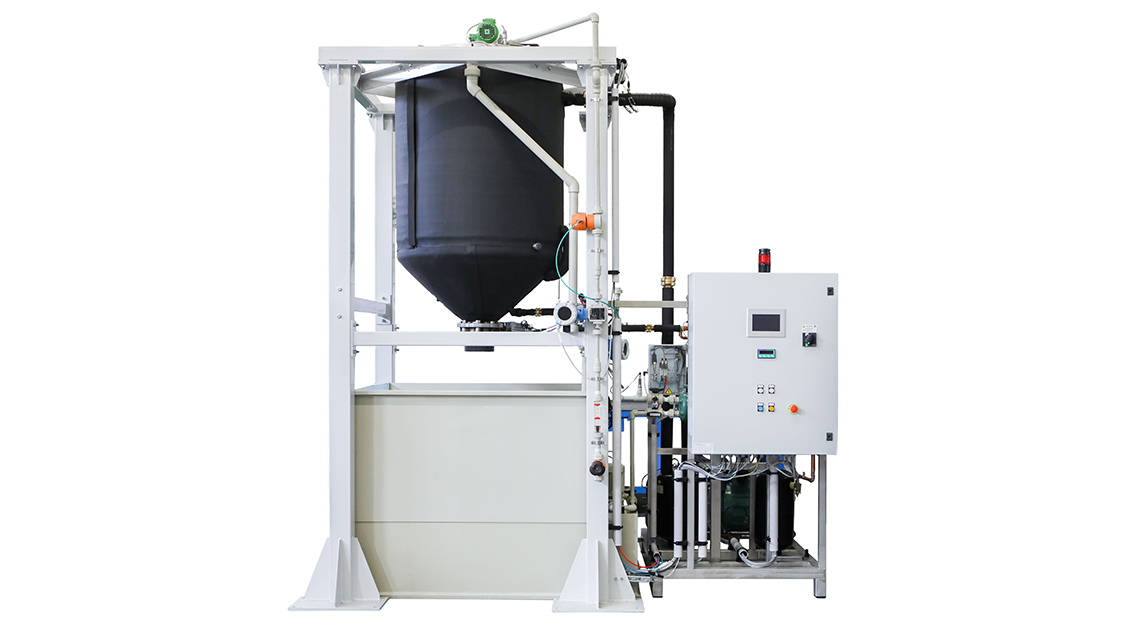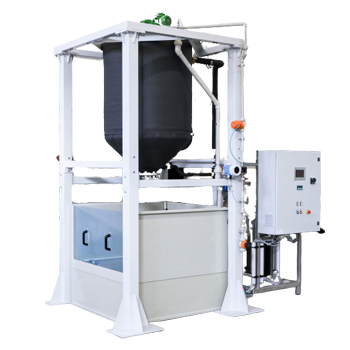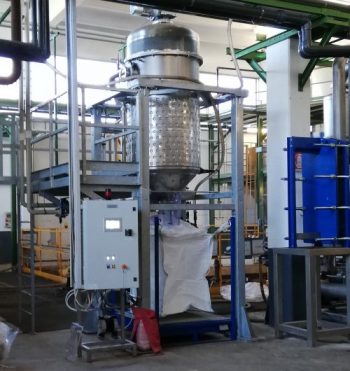Impianti trattamentoACQUE REFLUE
Home
/
crystallizers


Crystallization is a process where a chemical dissolved in a solvent precipitates in a controlled way in the form of crystals, so that it can be separated from the solvent itself.
In the evaporation-crystallization process, the concentrated solution is evaporated or cooled down until a saturated solution is obtained that progressively crystallizes in a reactor where it is kept constantly mixed. The crystallized salts are filtered on draining bags or sent to a centrifuge to separate the salts from the mother liquors.
According to the process and the chemical nature of the substances in the spent solution, the following are offered: “Cold” crystallizers or “hot” evaporators/crystallizers
Cold (or freezing) crystallization can be applied in some special processes, among which the decarbonation of galvanizing baths or crystallization of ferrous or copper sulphate (iron or copper chemical pickling with sulphuric acid).
“Hot” evaporators/crystallizers are used downstream from vacuum evaporation systems (Zero-Discharge technologies) in order to turn pre-concentrated waste water into dry waste. The base principle consists of eliminating the contained water through evaporation as much as possible, until the contained salts precipitate.
Heat pump cold crystallization system, where the process solution is cooled down to -10°C in a reactor with an internal mixer and external jacket where the primary cooling fluid circulates (Freon gas). The salts that have formed inside the reactor are discharged in semi-continuous mode into draining bags, the drained mother liquor is sent to the process line or brought back into the crystallization reactor.

These are concentration/crystallization systems with an almost atmospheric pressure and therefore at high temperature. The primary fluid to heat the solution to be treated can be hot water or steam. The crystallization reactor, complete with internal scraper, consists of a steel or special alloy vessel with an external heating jacket which the primary heating fluid goes through. The system can be offered with vacuum technology to lower the operating temperatures and condense the evaporated water as distillate.
